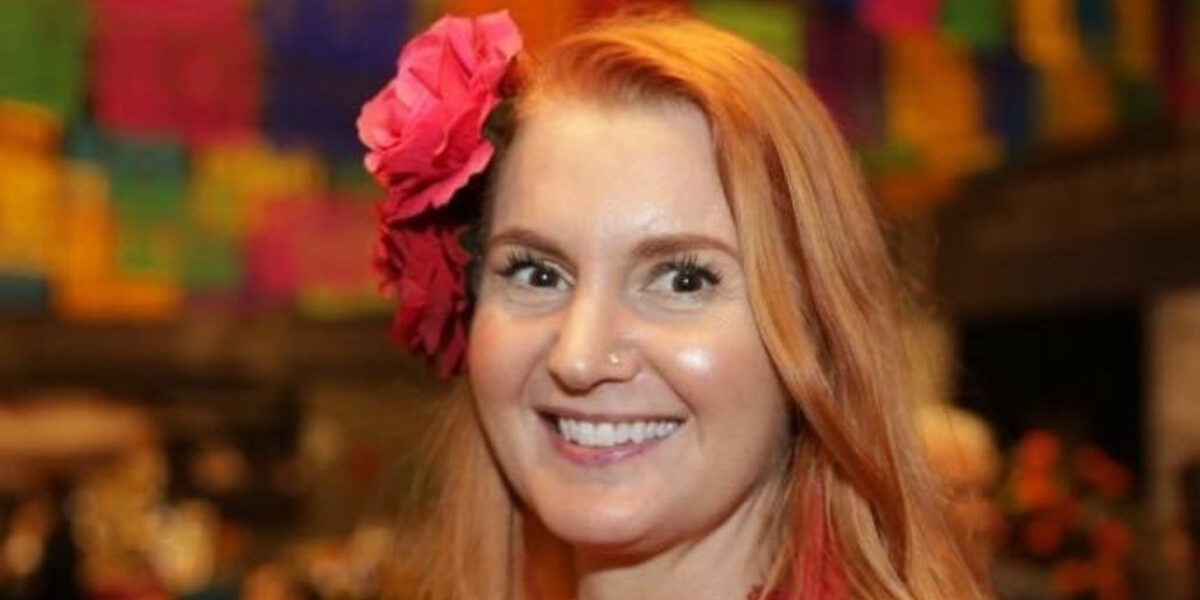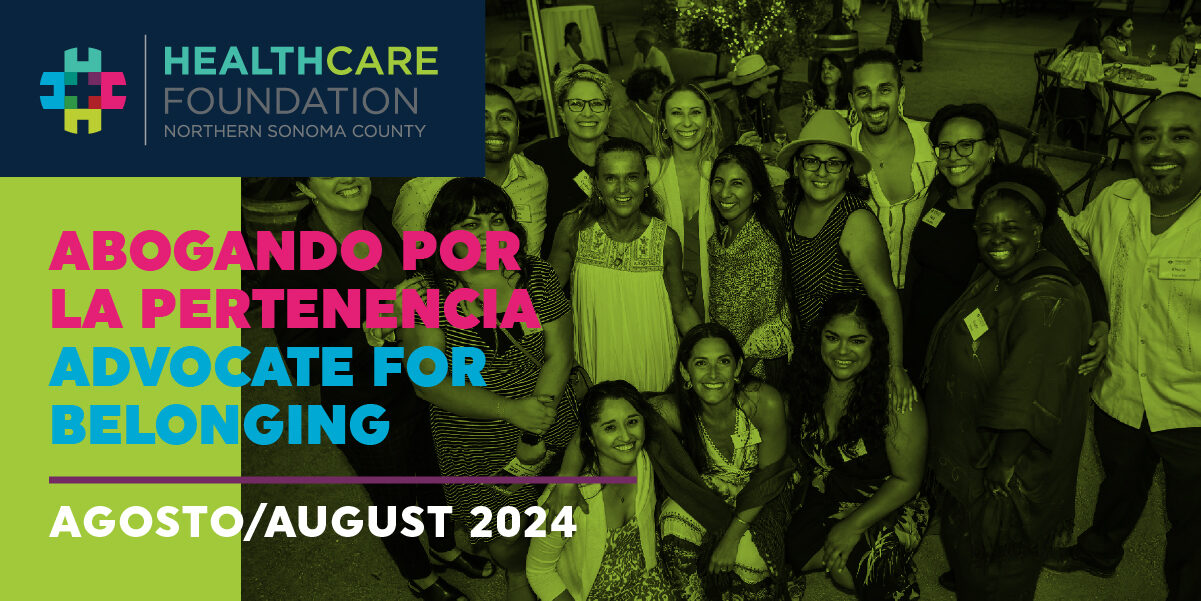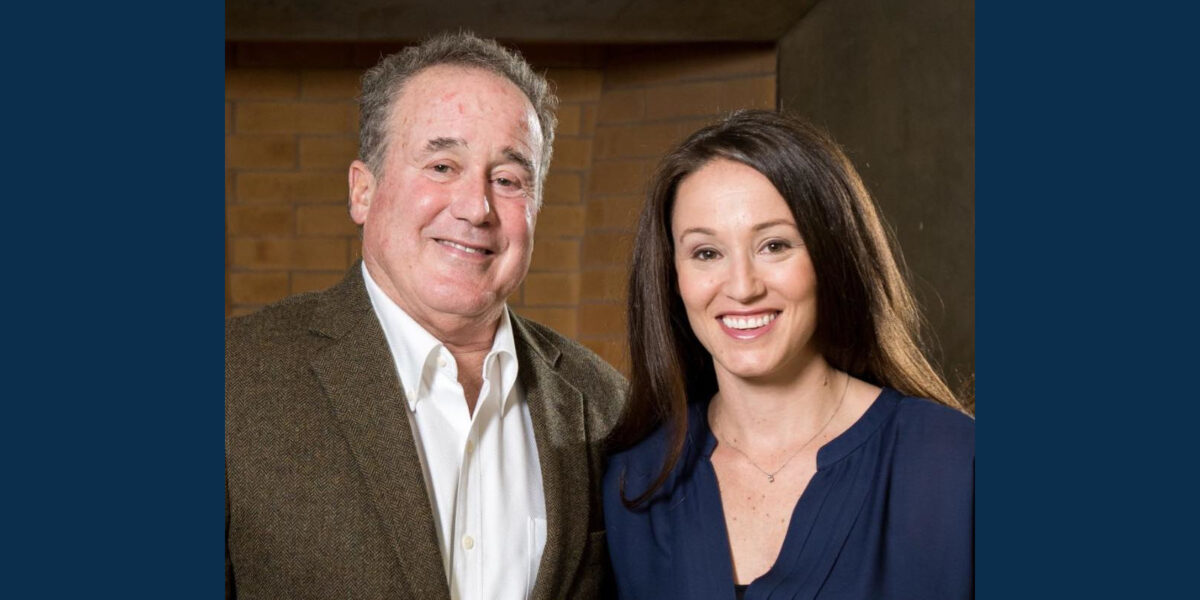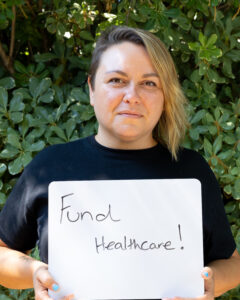

Grantee and Partner Spotlight: Karissa Moreno
We're proud to support the Center for Well-Being (CWB). We spoke with Karissa Moreno to gain insight on the vital role of community health workers.

A Conversation with Karissa Moreno of the Center for Well-Being
The Healthcare Foundation is proud to be a supporter of the Center for Well-Being (CWB), which has been advancing health equity in Sonoma County and beyond for the last 25 years. CWB serves 25,000 people annually with nutrition services, cardiac rehab, and more. CWB also employs community health workers, or promotores de salud, as health liaisons and navigators for underserved and marginalized communities, while providing training, support, and technical assistance at a time when the importance and value of community health workers have never been greater.
To share more about CWB’s work, and to get further insight on the critical role played by community health workers, we spoke recently with Executive Director Karissa Moreno. Karissa joined CWB in 2018 with a decade of experience in federally qualified health centers across California, including at Santa Rosa Community Health, and more than 15 years of expertise around community health workers in particular. The following conversation has been lightly edited for length and clarity.
How do you describe the work you do at the Center for Well-Being?
We have a two-pronged approach to our goal of advancing health equity in Sonoma County. On one side, we have an upstream prevention approach that focuses on ensuring that equitable policies, programs, and practices empower each individual in our community to be able to thrive – regardless of country of origin, documentation status, language spoken, income level, educational attainment, et cetera – and we operate using an equity, diversity, inclusion, and belonging lens. In practice, we pursue this upstream approach by providing innovative health equity programs to people of all ages, working collaboratively with our partners, and by through community-based education, outreach, and advocacy. A big focus of our work is around our community health worker Center of Excellence. [Note: More on this below]
The other side of our two-pronged strategy is evidence-based clinical services. When people are struggling with the effects of chronic diseases, or the primary care setting has failed them, we have specialty nutrition services that are recognized by the American Diabetes Association and are offered in English and Spanish. We serve a predominantly low-income population, and we accept all patients regardless of ability to pay. To offset the cost of provinding these life-saving services we’re active in sourcing grants to provide 100% patient scholarships. The other clinical service we offer is the only Phase 2 and Phase 3 cardiac rehabilitation program in Sonoma County. It’s really a transformative program because we know that cardiovascular disease and stroke is the number one killer in Sonoma County, and we care for individuals who have experienced the trauma of experiencing a cardiac incident.
Community health workers are either coming from the community that they serve or have a very high understanding of what the barriers are. They create safety around the healthcare process because it’s healing, informed, human-centered, heart-centered work that a community health worker brings.
Karissa Moreno, Center for Well-Being
The role of community health worker is a new concept for some of us, but your career shows that community health workers have been around for a long time.
Absolutely. Community Health Worker is the umbrella term for a hundred different names — promotora de salud, health coach, patient advocate, patient liaison, patient representative, and more. Community health workers have long been in the business of advancing health equity through many different roles and responsibilities. It’s only recently, especially in light of the pandemic and the recognition of gross health disparities in our community—particularly among our BIPOC, Latinx, and immigrant communities—that it’s become more widely acknowledged that community health workers can make a positive impact in quality of life and health outcomes. We have a local proof-of-concept, demonstrating the return on investment in integrating a community health worker workforce within the clinics, the healthcare system, community-based organizations, and so on.
Can you say more about CWB’s community health worker Center of Excellence?
The Healthcare Foundation has been a great supporter in helping us grow and sustain our community health worker Center of Excellence – which includes everything from our monthly Sonoma County CHW network meeting, a bilingual CHW informational e-newsletter, our CHW Core Competency training, CHW workforce pipeline, technical assistance for CHW clinical integration, and serving as Subject Matter Experts for UCLA, Stanford, and more. In light of changes that are coming down the pike with Medi-Cal and CalAIM, community health workers will have new reimbursement pathways, not only in the healthcare setting but also at nonprofits. We are aiming to build out our core-competency training to align with what the state will require for a CHW certification program – so that local employers can hire CHWs and be reimbursed for their work. The Center for Well-Being the only local trainer for CHW core competencies, and our goal is to be recognized by the state as a certifying entity for community health workers.
“Because Kim and the Healthcare Foundation Board are leading with trust-based philanthropy – really allowing for organizations to invest those resources in the individuals that are doing the work – those dollars are more powerful and achieve so much more.
Karissa Moreno, Center for Well-Being
It sounds like community health workers have long been an informal yet very important extension of the health safety net and but now we’re seeing that becoming more formalized, recognized, and better supported.
Absolutely. My foray into healthcare was as a community health worker – as a bilingual perinatal CHW for Santa Rosa Community Health. I worked at SRCH’s Lombardi Clinic in Roseland and served a predominantly low-income, Latinx, youth, and/or Spanish-speaking clietel as they were navigating the healthcare system – sometimes for the first time in this country. So I have a deep understanding of what CHW work looks like. You know, primary care is very hierarchical. It’s tethered to the clinicians because insurance reimbursement pathways have always been billed to the provider. My personal goal is to disrupt that hierarchy. I often say that there’s a deference to the white coat, there’s respect for the white coat, but there can also be a fear of the white coat. It’s an innate power structure. We also know that our healthcare system has been taxed during the pandemic, and there is absolutely a workforce shortage. This is where CHWs can help. They recognize the inherent barriers and the lived experience of the patients they serve. They understand why people are struggling. For example, there is a high cost to being poor. We essentially have a class system, and there are policies and procedures in place that keep people poor. Our society tends to blame people for the suffering that is actually the result of systemic racism and systemic poverty. So when you’re introducing a community health worker into the clinical care team, for example, the goal is that the provider is diagnosing and treating, but then you have a community health worker who is working on the social determinants of health—they’re assessing the unmet needs, recognizing those barriers. They can do that because they are either from the community that they serve, have similar lived experience, or they have a very high understanding of what those barriers are. CHWs create safety and trust because they provide healing-informed, human-centered, and heart-focused work. I see the growing demand for a CHW workforce an amazing opportunity for us to change how things have always been done so that we really care for our people. Unfortunately the system has failed so many.
There also has to be a recognition that training is incredibly important for community health workers, but it doesn’t stop there. You also need employers to really understand, respect, and supports community health workers. CHWs often work with community members who have a lot of trauma, and they are at risk of experiencing secondary trauma if they themselves are not supported. Since CHWs have traditionally been grant-funded, you’ll often find grant administrators supervising CHWs who may not understand what boots-on-the-ground work looks like. Additionally, there is typically a lot of rigidity in how grants are administered – with excessive reporting demands that can be almost antithetical to doing trauma-informed work because so many resources are channeled into reporting back to the funder.
By contrast, because Kim and the Healthcare Foundation Board are leading with trust-based philanthropy—really allowing for organizations to invest those resources in the individuals who are doing the work rather than in investing resources in that administrative burden of reporting—those dollars are more powerful and achieve so much more. It also allows for space to be innovative and creative, because there’s flexibility in how things are developed and implemented. It allows for a lot more nimbleness in being able to meet the community where they’re at – and with their input and feedback – adjust and respond and adapt. It’s great that the Healthcare Foundation has been supporting trust-based philanthropy, and we, from the perspective of nonprofits, are able to do so much more as a result.

Related News + Stories
Invest in Our Community
Your support is vital to our collective vision of eliminating health inequities in northern Sonoma County.
Donate



